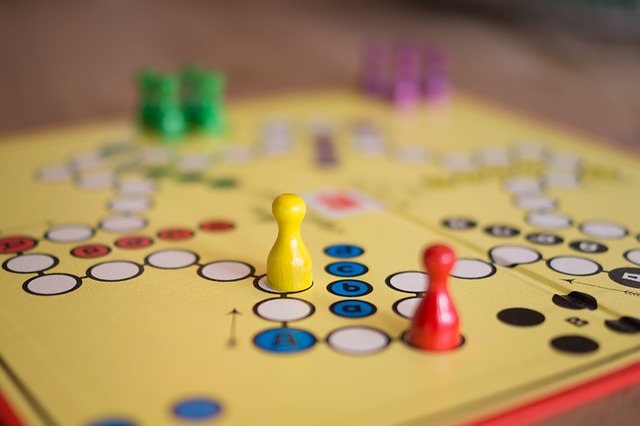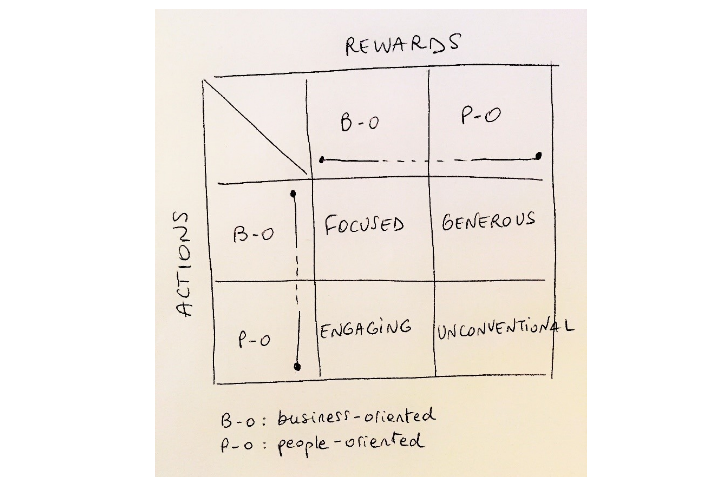
"Games are the new normal." These words, pronounced by Al Gore in 2011, are even more true years later. Today, thanks to the spread of mobile devices, games are everywhere, as a stratified layer over our daily life.
Talking about games as a business tool, we do not just imply the Pokémon craze; we also consider the idea of applying game dynamics and thinking to non-game applications. Gamification strategies, in a few words.
In the last decade, gamification has established itself as a powerful tool that uses a combination of internal and external rewards to drive both intrinsic and extrinsic motivation. As a result, it can help you address your target more successfully to achieve multiple business results.
There is still little knowledge, however, about gamification and a lot of perplexity and hesitation about how to get started. The main reason for skepticism is that, when people hear the word ‘gamification’, they often just hear the sound of the first element, the ‘game’.
They immediately think of a quick, fun one-shot initiative for short-term entertainment purposes, aimed at generating some word-of-mouth and awareness.
Also, the fact that there are so many companies adopting a gamified system and missing the mark may lead to the conclusion that these mechanics do not work with complex organizations.
The truth is hard to swallow: in most cases, failure is the result of underlying issues within the organization itself. That is, using gamification as a set-it-and-forget-it tool, without fully understanding how it works and, even worse, without a clear goal and a coherent strategy.
We have stressed out so many times the importance of game dynamics in business contests, and yet we have to admit that lots of marketing professionals still do not take it seriously. They do not see it as a valid alternative to traditional methods, in the a priori belief that gamification is quite the same as games, ignoring that it comes in many shapes and forms.
There are many online blogs and resources where you can find complete lists of mistakes you must avoid when using gamification for your business purposes.
Most of them can be summed up in one: Losing the perspective and use gamification like it was the objective rather than the tool to reach it, and then subsequently end up having a mere technological exercise that does not serve your business purposes.
It is one thing to apply gamification from scratch as a one-shot, just to do something different and generate some word of mouth. It is quite another to implement it thoughtfully, looking at consistency and dealing with long-term goals.
In a certain way, it is like confusing the method with the methodology: as any other business practice, to be effective gamification must be based on a coherent overall paradigm – that is, your approach, your goal-based strategy.
Considered with the right approach, gamification is one of the most promising areas in marketing and is positioned to become a highly significant trend over the next years. And there are some good reasons.
VERSATILITY
As a method, it is up to you to include gamification in a proper strategy. So, you can apply it in various areas of your company:
- Internally, to motivate your employees and sales team improving their performance;
- Externally, to drive your customers' behavior delighting them with engaging dynamics and interactions.
MULTIPLE GOALS
In a world where creativity and innovation are increasingly crucial for competitiveness, and where the ‘fifth’ p - people - of marketing has become the ‘first’, the gamification represents a great the best way to bring your brand and customers together.
Whether people means your employees or your customers, all you have to do is to select specific actions and rewards – the two most important elements of gamification - and combine them creatively to reflect and give voice to your brand values, engaging people with diverse activities simultaneously.
PERSONALIZATION
Today, the employee and customer experience has replaced the product/service as the main element of differentiation in crowded markets. Digital customers do not just want to buy things; they want to live experiences. They want personalized experiences.
Thanks to psychological and motivational theories behind game dynamics and mechanics, using gamification you can decide to incentive specific actions, activities and behaviors in specific audiences.
Take your buyer personas' characteristics as 'filters' to help you choose the most efficient dynamic for every customer segment.
However, as said before, to confuse the method with the methodology is the ever-present risk with gamification, and it ends up with a mere technological exercise. The first step to avoid it is to clarify where you want to position within the vast world of gamification.

That is why a model - such as the one we have sketched above - might be useful if you are considering gamification as the next step or a future step in your marketing strategy.
Analyzing a set of successful case studies in the gamification landscape, we have identified four main categories of strategies. They can be inserted in a two-by-two matrix, formed by crossing two fundamental elements:
Actions. What kinds of actions, activities, and behaviors enable to participate and succeed? Do they have an impact - more or less direct - on your bottom line, or not?
Rewards. What kinds of premiums and benefits do you offer in return for these actions and behaviors? Are they about your products and services, or not?
By crossing these two elements - actions and rewards - and considering as variables the different forms they can take, we get four broad typologies that might help you choose where you want to position.
In most cases, companies decide for what we call the focused strategy. Being "Focused" in this context means to adopt a business-oriented approach with both actions and rewards, encouraging desired behaviors that have a - more or less direct - positive impact on your bottom line, and giving visibility to your products or services at the same time, putting them as rewards.
For example, Urban Outfitters’ customers receive points when they use the app to upload and share photos of Urban Outfitters merchandise on their social networks. They can exchange points to receive rewards such as designing their outfit or hold their own fashion show at an Urban Outfitters store.
Through a series of mini challenges, that include tweeting about a purchase, using a certain hashtag, or visiting a particular store, customers receive rewards for their interactivity, including badges, access to merchandise, and early sales notices.
Rewarded actions can be of various kinds, more ‘hard’ or ‘soft’ depending, in general, to what extent they involve money. The more 'soft' they are, the more they take distance from giving you a profit, but can come close to other means of outcomes and make your brand more human.
Look for example at DICK'S Sporting Goods, a brand that rewards users for their healthy lifestyle. With its app, DICK'S Sporting Goods allows users to earn points for achieving activity goals, motivating and encouraging them to reach their personal goals by offering special savings for being active.
Take also the Nike Hong Kong #Makeitcount Campaign: participants complete “missions” in a variety of activities such as running, skateboarding, playing football, walking a pet or attending a dance class. They then share a photo or status on Facebook, earning points that they can exchange for accessories, clothing, accessories, equipment and tickets to sporting events.
These two are typical examples of the "Engaging" gamification strategy because promoted and rewarded activities are related to people’s daily life, not to your brand.
Instead, the "Generous" type does exactly the opposite, encouraging desirable actions with a much more people-oriented approach in the rewards system, and thus giving users the opportunity to choose from a wide range of benefits, not just your products or services.
What about the fourth type? Unlike all others, here both actions and rewards are unrelated to your business. “What will I gain?”, you may ask. This fourth typology is the creation the genuine experience, a game where you are delighting and "Unconventional".
Employee engagement and customer care initiatives - whose primary objective is to build a stronger trusting relationship - are excellent examples of this gamification type in practice.
This is not an unexplored topic, and online it is easy to find use cases from small and big companies that have successfully adopted gamification for very different purposes.
You just have to find your inner reasons and understand which types of mechanics resonate better with your customers or employees.
And remember that "it is play that helps us do serious things better." (Jake Orlowitz, Head of The Wikipedia Library - Wikimedia Foundation)
Download The Mobile Engagement Playbook, a collection of relevant insights based on many years of Neosperience's expertise that'll help you to overcome the challenges of the digital transformation and grow your business exponentially.



 Your magnifing glass to deeply understand your users and increase the value of each relatonship.
Your magnifing glass to deeply understand your users and increase the value of each relatonship. Listen to the voice of your customers deeply to understand what they truly want.
Listen to the voice of your customers deeply to understand what they truly want. The Lead Generation Platform to get leads from anonymous traffic on your website.
The Lead Generation Platform to get leads from anonymous traffic on your website.  Understand the behavior of people in physical spaces and monitor safety requirements.
Understand the behavior of people in physical spaces and monitor safety requirements. The Digital Commerce Platform designed to follow the most modern technological standards..
The Digital Commerce Platform designed to follow the most modern technological standards.. The XReality platform to tell brand and product stories by connecting physical and digital worlds.
The XReality platform to tell brand and product stories by connecting physical and digital worlds. Points, rewards, levels, badges, missions: a world of nudges to nurture your customer community.
Points, rewards, levels, badges, missions: a world of nudges to nurture your customer community. Discover all the other solutions!
Discover all the other solutions!









